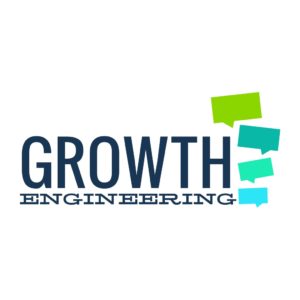How Your Learning Management System Can Help You Put The Right People In The Right Roles
Do you have employee engagement problems? If so, it’s easy to assume that there’s something wrong with the organizational culture. The truth might be a lot simpler and (luckily) easier to remedy! You might just have all the right employees who understand your values, but they’re stuck in roles that don’t suit their skills, their experience or their personality. If companies don’t try to ensure they put the right people in the right roles, it can have a disastrous impact. From an operational point of view, it’s much more efficient to put people in the places where they can make a real difference, rather than squandering their talent. On a more human level, these employees will be much happier doing a job that puts them on the right development path.
Counting The Cost
It’s difficult to identify employees’ strengths when you rely solely on annual reviews. At worst, the only indication that an employee is in the wrong role is when their underperformance has a serious impact, or they simply get frustrated and decide to move to another company.
It’s easy to underestimate the financial repercussions. In 2014, Credit Suisse1 tackled the issue of dissatisfied employees head on. By contacting the employees directly and moving them to better positions, they estimated that they saved between $75 million and $100 million in rehiring and training costs. Just think about what you could do with your training programme if you could free up that kind of money!
Your LMS To The Rescue! 7 Ways Your LMS Can Help You Put The Right People In The Right Roles
Your Learning Management System can be a powerful tool, provided it makes use of the right technologies. It needs to have features that keep the learners engaged, giving you an up-to-date picture of their competencies and attitudes. A top-down eLearning delivery platform isn’t enough - it needs to give learners ownership of their training and let them forge their own path. It also needs to let them collaborate with their managers and peers.
Learning isn’t a one-off event and a modern LMS needs to capture the learning that happens every day, on the job. It might sound like a lot to ask, but the technology is readily available – it’s just a matter of knowing how to use it. Here are just a few ways that your LMS can help you put the right people in the right roles.
1. More Transparent Career Paths
A 2016 survey2 showed that 70% of employees are dissatisfied with career opportunities. The survey found that 42% of departures are due to the belief that there’s no future career opportunity and a further 31% due to a lack of scope for development.
Your learners should be able to see how their training directly links to their career path. Game mechanics like Levels and Progress bars aren’t just for fun – they enhance the user interface, give a clear visual representation of the learner’s position on their journey and thus give them the motivation they need to continue.
2. Advertising New Roles
When new roles become available within the business, it’s important to advertise them internally. After all, employees can’t move to a more fitting role if they don’t know about it. Today’s learning platforms have a wealth of options for internal marketing. Home page banners let you create a buzz around anything from a new training initiative to the year-end party. You can use the same features to advertise new roles, or opportunities to try something different for a change.
3. Leadership Training
Matching people to their ideal role can be a big task. There’s no reason why the training department should shoulder that responsibility on their own. The managers of each team are in the best position to judge whether an employee is the right fit.
Skills like this don’t always come naturally. Invest in training for your managers that gives them the tools they need to identify strengths in their teams. This can easily be added to the managers’ curriculum on the learning platform.
4. Clearer Role Descriptions
According to Gallup3, only half of employees know what’s expected of them at work. This lack of clarity is likely one of the major reasons that employees end up in roles that don’t suit them. If your training content is tied to career pathways, this will be a big help, but there’s yet more you can do to increase their understanding of roles.
Performance management add-ons are available for some learning platforms. These help managers track individual KPIs and align them with departmental and organisational goals. They can also let admins specify roles and assign competencies to them. With this in place, the employees can instantly see what they need to develop and managers can identify people whose skills might be better suited to something else.
5. Better Review Process
In the same way that learning isn’t a single moment in time, career development isn’t something that happens once a year. Since employees gradually grow over a period of time, the convention of the annual appraisal isn’t effective. A lot can happen in a year, and in that time, your employees might decide to move to pastures greener.
Annual reviews are difficult for managers to coordinate. Breaking the review process down to smaller events throughout the year makes them easier to manage and it helps identify employees who are in the wrong role. The reviews tool on the learning platform can be used to schedule these interventions at more regular intervals.
6. Getting Other Perspectives
Social functionality is vital in today’s learning platforms. Not only does it improve communication and collaboration, but it gives employees the chance to demonstrate their work. They can share their experiences on the social feed or update their profile with their portfolio.
Giving employees an insight into other departments shows them what each role involves in practical terms. This kind of visibility can help them decide whether they are where they need to be.
7. Identifying Expertise
Social features also unlock the ability to capture knowledge from everyone in the organisation. By boosting your intellectual capital, everyone can make better decisions and improve processes. By paying attention to who contributes and in what categories, you identify Subject Matter Experts.
These hidden experts can show up where you least expect them to. They might even be in completely unrelated departments. Letting employees demonstrate their expertise is a great way to highlight people whose skills could be better used if they were in a more appropriate role.
Final Word
If you think of your LMS simply as a vehicle for eLearning units, you could be missing big opportunities. As the central development tool, the learning management system is the ideal place to keep track of employees’ roles. You just need to ask yourself if your learning platform is pulling its weight.
Footnotes:
- Why People Quit Their Jobs
- Creating Compelling Careers for Employees and Organizations
- Obsolete Annual Reviews: Gallup's Advice










